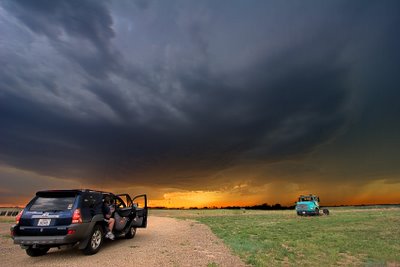Click to enlarge in a new window.

Nebraska state Capitol

Another capitol shot.

Nebraska state governor's mansion.

Here's my experiment with using HDR for weather photos. If you can get the sky to sit still, it can do some very interesting things. HDR photos kinda seem like impossibly exposed Velvia photos on crack, which can be good or bad, depending on if having your photos as saturated as a Disney cartoon is to your liking or not.
Lastly, here's a comparison of a "normal" photo I took while attempting to expose for the sky and the brightly reflective car versus the same shot using the HDR process:



4 comments:
Your weather photo caught my eye. Good photograph.
Was the storm HDR photo created from one RAW photograph or from totally separate photos?
That was created from 5 or 6 bracketed photos. It took about 8 or 9 seconds total to take them all -- that's why there is no motion blur, as everything in the scene was pretty motionless for the time I took the shot.
"How to make them look realistic" --
Use an image-processing program such as the gimp or photoshop; after your images are blended, then load the composite image and use masking (to alter the local contrast while preserving the overall soft range).
You will discover that the "contrast mask" works pretty well, and there's a tool to create this directly on the image; you simply choose the degree of edge enhancement and the pixel radius over which to apply it (the best pixel radius depends on the expected size of the physical reproduction and the viewing distance).
There are other masking techniques that you can read about in the photographic and printing literature, such as shadow masking, that will be useful for specific images.
Post a Comment